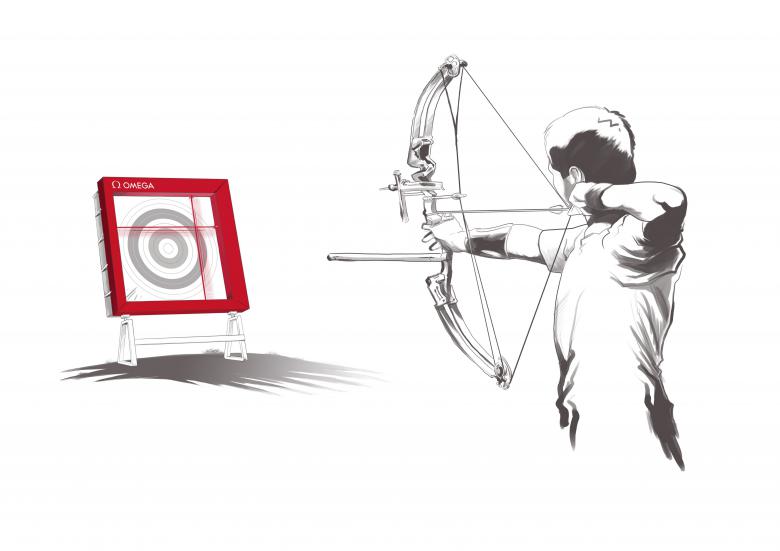OMEGA at the Rio Olympic Games
On 26 occasions since 1932, OMEGA has fulfilled the prestigious role of Official Timekeeper at the Olympic Games. No matter the year, the Olympic Games have always delivered a multitude of great moments in time. Now, as the world's attention turns to Rio de Janeiro, the brand will assume its duties for the 27th time. Surrounded by the colour and culture of this vibrant city, we will work with the enduring commitment and passion that has sealed our unrivalled reputation.
For an edition of the Olympic Games today, OMEGA sends around 480 tonnes of equipment, miles and miles of cabling and 450 timekeepers. This massive undertaking shows the effort that our brand is willing to exude in order to serve the dedicated athletes who are competing on one of the biggest stages of their lives. Of course, it is not just these few weeks in which OMEGA gives focus. Throughout our history as Official Timekeeper, we have also been a leading force in researching, developing and mastering the technologies that record every second.
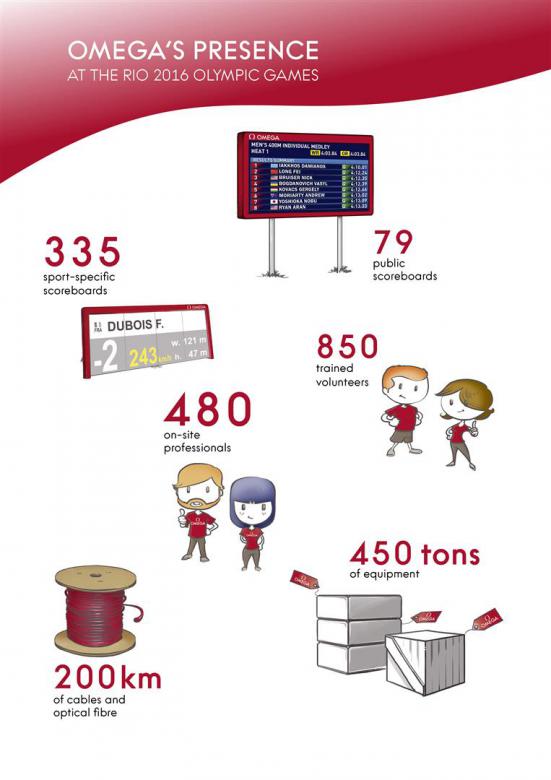
In the pool, we have developed many systems that make victory indisputable. These include the famous touchpads positioned at both ends of the swimming pool, allowing athletes to stop time with their own hands. Out on the track, OMEGA has been responsible for the creation of the most famous devices used in precision sports timing, among them the Scan’O’Vision MYRIA photofinish cameras, starting blocks, false-start detection technology and high-speed video systems.
These Olympic Games in Brazil promise to be like no other. It is the first time that South America has hosted the largest and most famous multi-sport event in the world and, like everybody, we are expecting an unforgettable occasion. For OMEGA, there is also a true sense of pride. We know that whoever stands on the podiums in these Olympic Games will do so with the most precise knowledge of their medal-winning performance.
New timekeeping technologies at the Rio 2016 Olympic Games:
OMEGA scan’o’vision myria
Perhaps the most widely known sports timekeeping device used in athletics is the photofinish camera, the equipment set up at the finish line of sprints, hurdles and other races. Each runner’s image is captured by this device as he or she crosses the finish line and it is this information that the judges use to officially determine the champion of each race. The new OMEGA Scan’O’Vision MYRIA is a combination of a time detector and a chronograph. Its photofinish images are produced using a high-tech image-capture device that records up to 10,000 digital images of one vertical line per second. Improved light sensitivity means that images are of higher quality than with previous versions of the photofinish camera and thanks to its compact size; it takes less time to assemble and disassemble.
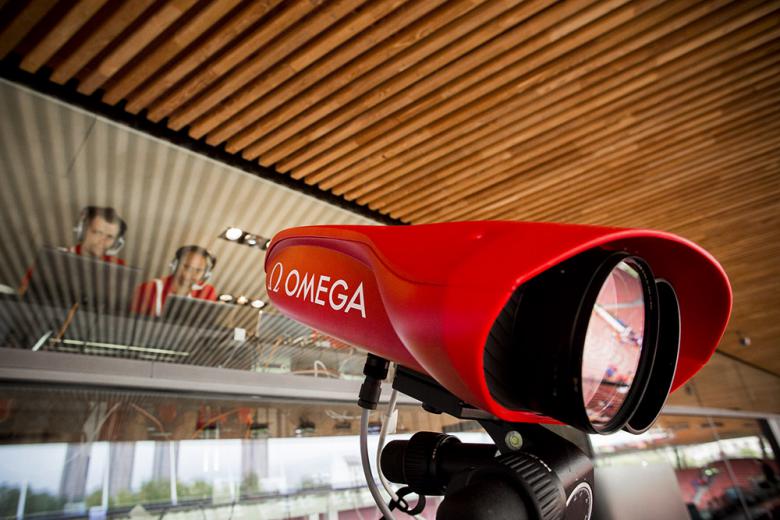
New OMEGA photocell technology
Photocells have been an important part of “stopping time” since 1948. They are used to give an instant result at finish-lines and give racers and spectators a precise understanding of the winner’s recorded time. In most recent competitions, two pairs of photocells have emitted beams of light across the finish line that halt time as soon as a competitor crosses. Today, OMEGA proudly introduces the next generation of this vital equipment. Instead of two photocells, there are now four, all integrated into one unit, and positioned on the finish line of the Athletics events. With four photocells in operation, more body patterns are able to be detected as they cross the line, and it will no longer be necessary to move the height of the cells for hurdle races. This means even more accuracy at the moment that matters.
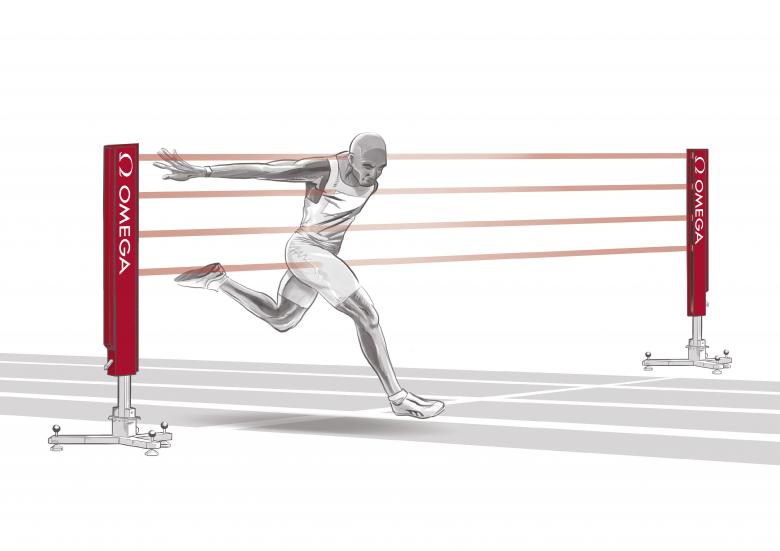
New and improved scoreboards
The hi-resolution scoreboards that will be used in Rio de Janeiro have been re-designed and are operated by new software that enables them to display not only text and live information, but also animations, athlete pictures and visual imagery. Using modern effects, winners’ names, results and their nation’s flag can be boldly displayed, adding to the drama, thrill and excitement of each event. Not only is there consistency across all events, but the big moments such as records and medal winning performances will be highlighted like never before. A lot of time has been spent testing with different distances and contrasts to ensure visibility is at the highest level possible. It’s a great advancement from the amber and black displays used in the past.
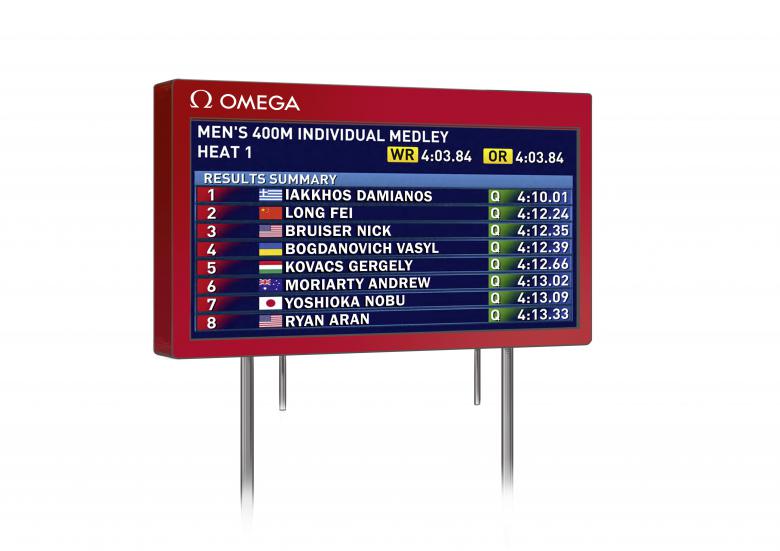
False start detection system
The starting blocks in Athletics have been enhanced with built-in sensors that measure an athletes’ force against the footrest 4,000 times per second. The detection system instantly sends the force measurements to an on-site computer and creates a “force curve” so that the starter can visually analyse the reaction in the event of a false start. This is all possible because of new software and enhanced communication technology between the starting blocks and the false start detection system.
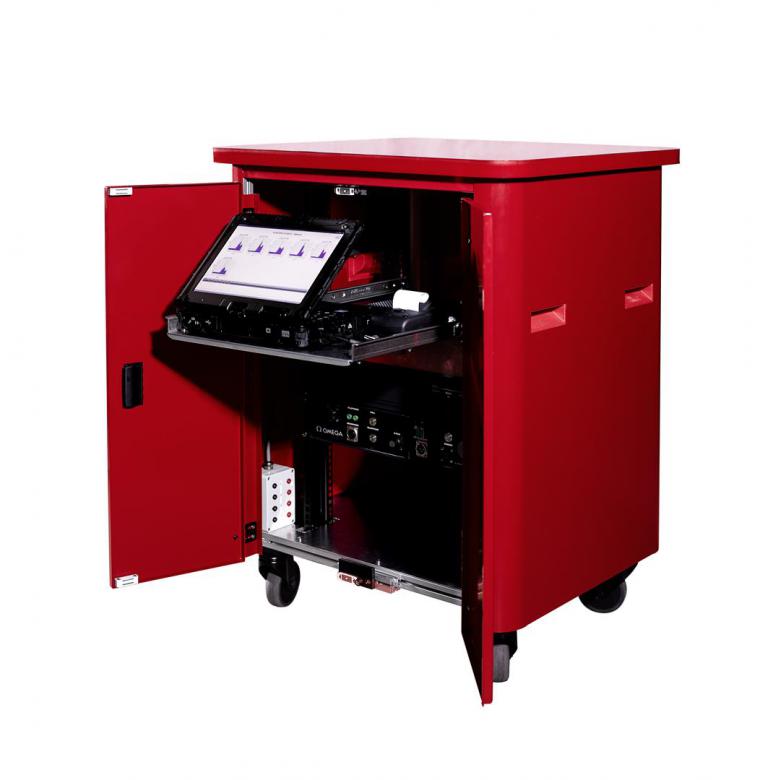
Golf scoreboards
As golf makes its return to the Olympic Games after more than a century, OMEGA is introducing a new scoreboard especially for the event. Placed at ground level on four dedicated tees, the scoreboards will be equipped with radar measurement systems. As a player tees off, information will be captured and then displayed to spectators so that they can closely follow the action. Along with the player’s name and current score, the scoreboard will show a live output of the stroke speed, estimated distance and height of the stroke.
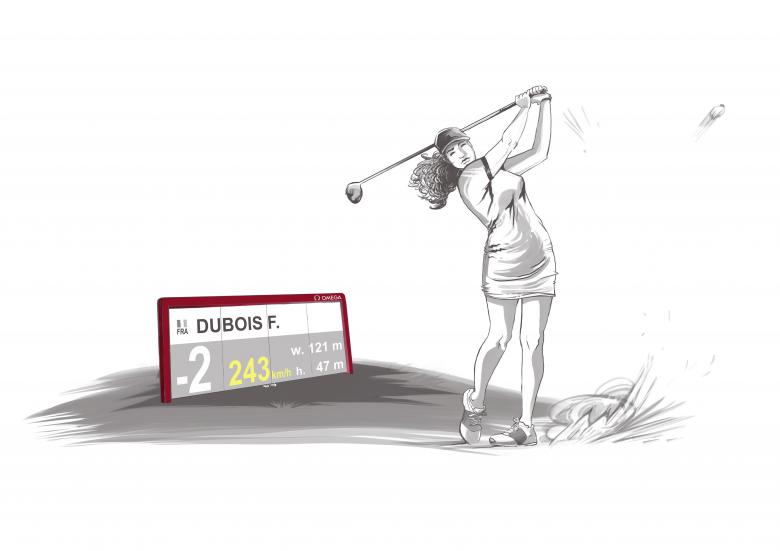
Archery targeting system
For the first time at the Olympic Games, technology will be used to record scores in archery events. Until now, the judging has been done solely by the human eye using a specialised scope. Now, OMEGA introduces a new target with a built-in scanning system. When the arrow hits the target, two scanners run lengthways and widthways to calculate the arrow’s distance from the centre point. The system has a 0.2mm accuracy which is impossible for the human eye to detect. It’s also fast, delivering results within 1 second from the moment the target is hit.
